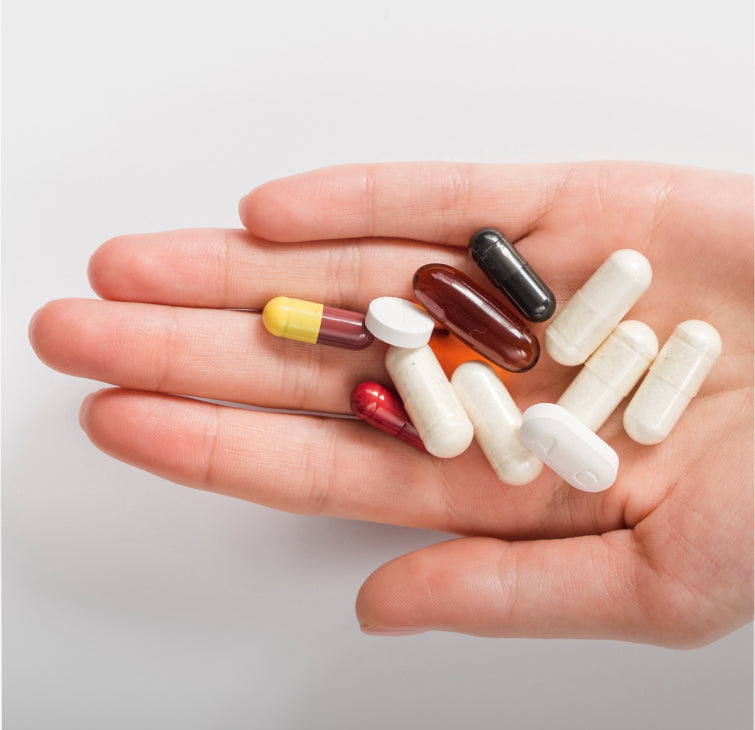Although there are only 2 to 3 grams of Zinc in the entire body, it is involved in over 300 physiological reactions, making it an essential trace element.
In this article we look back at its role, its benefits, but also the necessary needs and the risks in the event of deficiency.
What is Zinc and what are its biological roles?
Zinc is an essential trace element involved in many physiological functions. Present in all cells of the human body, it is mainly stored in muscles (65%), bones (20%), liver and prostate in men.
As a cofactor, it participates in more than 300 biological reactions (enzymatic, etc.), including:
- Protein synthesis
- Regulation of gene expression
- The immune response [1].
Dietary zinc is always associated with other molecules to form salts, which are more or less bioavailable. Zinc bisglycinate is remarkable for its high intestinal absorption. This chelate, formed by the bonding of zinc with two glycine molecules, benefits from good bioavailability by limiting interactions with dietary phytates, often responsible for inhibiting zinc absorption by the intestinal wall [2]. Glycine is also the main amino acid of collagen, another advantage!
The benefits of zinc
Zinc plays an essential role in the growth and repair of body tissues, the immune system, and nutrient metabolism [3].
It is essential for DNA and RNA synthesis, cell division, and wound healing [1].
The antioxidant properties of zinc help neutralize free radicals, thereby reducing oxidative stress and the risk of chronic diseases such as cancer and cardiovascular disease [4].
In young people, zinc is also necessary for thymus function and the production of T lymphocytes, key elements of the adaptive immune response [3]. Studies show that zinc can reduce the duration of cold symptoms and strengthen resistance to infections [5].
In reproductive health, zinc is essential for spermatogenesis and testosterone production in men, and it plays a role in hormonal regulation in women, particularly during pregnancy [6].
What are the zinc requirements?
Recommended dietary intakes (RDIs) for zinc vary depending on age, gender, and physiological status. They aim to replace approximately 0.5% of total zinc stores each day.
For an adult, the ANCs are approximately 11 mg/day for men and 8 mg/day for women, with increased requirements during pregnancy (11-12 mg/day) and breastfeeding (12-13 mg/day) [7].
Adolescents have significant needs (more than 10 mg/day) to support their growth. Zinc deficiency is an aggravating factor in acne .
The actual absorption (bioavailability) of ingested dietary zinc is, however, very variable and difficult to predict, particularly because of the negative interaction with phytates present in many foods: rice, cereals, seeds, etc. This reinforces the interest in supplementing with zinc bisglycinate, the absorption of which is less affected by these inhibitors [2].
What are the symptoms of zinc deficiency?
According to the World Health Organization (WHO), 2/3 of the world's population has a moderate zinc deficiency . Complete zinc deficiency is rare but deficiency is common.
In adults, long-term clinical signs of deficiency include taste and smell disturbances, slow wound healing, alopecia, and weakened immunity [8]. Deficiency may manifest as unexplained weight loss, skin lesions, and increased susceptibility to infections [9].
In young children, severe deficiency can lead to growth retardation and developmental abnormalities [8].
Adolescents will be sensitive to the relationship between acne and low zinc intake.
Populations at risk for zinc deficiency include the elderly, pregnant and breastfeeding women, vegetarians, and people with gastrointestinal diseases such as Crohn's disease or ulcerative colitis, which may compromise zinc absorption [10].
Supplements, when formulated according to nutritional standards, are an easy solution to ensure this balance. There is no need for extreme dosages (above the ANC) and regular courses of treatment at moderate doses remain ideal.
Our food supplement rich in zinc Bisglycinate
Our Zinc food supplement is formulated with Zinc Bisglycinate to optimize its absorption in the cellular environment. Thanks to the association (chelation) with Glycine, it has a higher bioavailability than other common forms of zinc, such as zinc gluconate or sulfate. This formulation allows for efficient intestinal absorption, minimizing the effects of dietary inhibitors such as phytates [2].
Zinc bisglycinate is a safe and effective option for correcting zinc deficiencies and promoting optimal health, particularly in settings where zinc absorption is compromised or requirements are increased [2].
Our Argalys Zinc food supplement is supplemented with other synergistic active ingredients for greater effectiveness:
- On skin health , healing, reduced sensitivity to acne: Selenium, vitamin C, Methionine and glycine.
- On immune dynamism: Vitamins C and B6, selenium.
Are there any side effects from taking zinc?
Although zinc is an essential trace mineral, excessive consumption can lead to unwanted side effects.
Prolonged consumption over several weeks, at high doses, beyond the tolerable upper intake set at 40 mg/day (4 times more than the average daily requirement) for adults, can interfere with the absorption of other essential minerals, particularly copper, leading to copper deficiency and anemia [7].
The main symptoms of zinc overload include gastrointestinal disturbances such as nausea, vomiting, abdominal pain, and diarrhea [7].
One capsule of our Zinc supplement per day provides 10 mg, which, even when combined with a diet slightly rich in zinc, does not present any risk of excess in the medium term.
Sources:
- Hambidge KM, Krebs NF. Zinc deficiency: a special challenge. J Nutr. 2007.
- Rosado JL. Zinc and copper: proposed fortification levels and recommended zinc compounds. J Nutr. 2003.
- Prasad AS. Zinc in human health: effect of zinc on immune cells. Mol Med. 2008.
- Hunt CD. Zinc, nutrition, and chronic disease prevention. Adv Nutr. 2012.
- Hemilä H. Zinc lozenges and the common cold: a meta-analysis. BMC Fam Pract. 2015.
- National Institutes of Health (NIH), Office of Dietary Supplements. Zinc Fact Sheet for Health Professionals. 2021.
- European Food Safety Authority (EFSA). Scientific Opinion on the Tolerable Upper Intake Level of zinc. EFSA J. 2006.
- Brown KH, Rivera JA, Bhutta Z, Gibson RS, King JC, Lonnerdal B, et al. International Zinc Nutrition Consultative Group (IZiNCG) technical document #1. Food Nutr Bull. 2004.
- Krebs NF. Update on zinc deficiency and excess in clinical pediatric practice. Ann Nutr Metab. 2013.
- Wessells KR, Brown KH. Estimating the global prevalence of zinc deficiency: results based on zinc availability in national food supplies and the prevalence of stunting. PLoS One. 2012.
 04 74 03 98 80
04 74 03 98 80










